
British commandos train with the Fairbairn-Sykes Fighting Knife during World War II. Imperial War Museum photo.
Described as a gentle and sweet boy by his siblings, Herbert K. Pililaʻau was an independent 22-year-old Hawaii native who enjoyed classical music, singing, and playing his ukulele. When the U.S. declared that they were going to war in the Korean peninsula, Pililaʻau, alongside 4,000 other Hawaiian draftees answered the call. In March 1951, he arrived in North Korea as a part of the U.S. Army’s 23rd Infantry Regiment where the quiet and unassuming young man who “couldn’t hurt a fly” earned legendary status on “Heartbreak Ridge.”
For several hours on the morning of Sept. 17, 1951, and into midday, U.S. troops were in a desperate fight to control the strategic hilltop. When his commander ordered the soldiers in his platoon to retreat 200 yards from their position because of an imminent threat of being overrun by the enemy, Pililaʻau volunteered to cover their withdrawal.
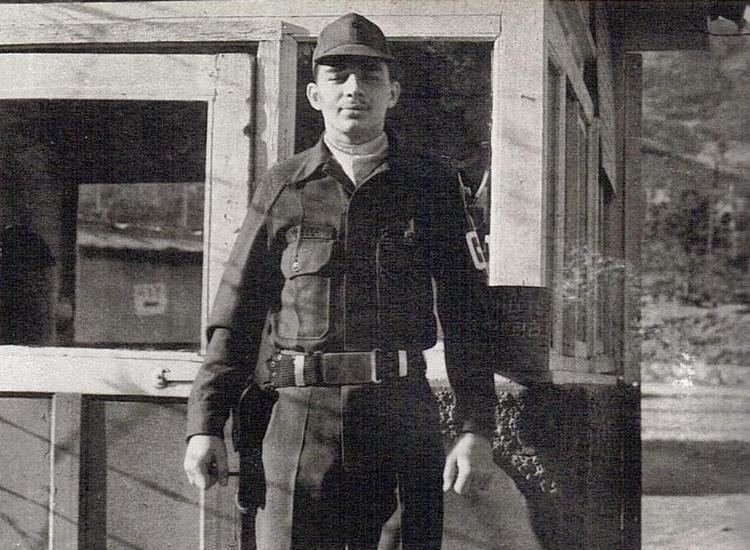
Through waves of advancing North Korean soldiers, he fired his M1918 Browning Automatic Rifle with pinpoint accuracy until all of his ammunition was spent. However, the enemy soldiers kept coming. Pililaʻau refused to leave his position and switched to the hand grenades on his belt.
When he had no more grenades to hurl, he threw rocks and nearby objects until they were on top of him.
Pililaʻau pulled out his trench knife and engaged the enemy in hand-to-hand combat while his unit helplessly watched from afar in total disbelief. He suffered a gunshot wound, but he never gave up and continued onward until a final bayonet struck him down. A half hour after his last stand, the Americans retook the ridge and discovered that Pililaʻau had courageously — and single-handedly — killed 40 enemy combatants. He was posthumously awarded the Medal of Honor, which made him the first Hawaiian to receive the award.
Having a tool that can aid a soldier when circumstances get up-close and personal is essential, as highlighted by Pililaʻau’s heroic final stand. Throughout history, service members have relied on knives when other weapons and resources have failed. But not all knives are created equal. From World War I to the Global War on Terror, a handful of military-issued blades have proven themselves to be trusted and beloved by those whose lives depend on them.
Mark I Trench Knife
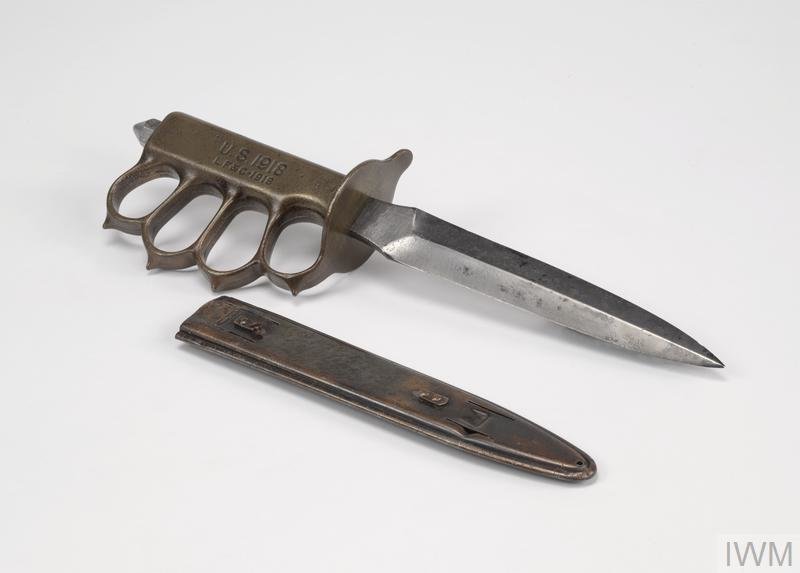
The Mark I trench knife was not only preposterous in its comic book design, it was actually some-what practical, too! World War I saw horrific fighting in close quarters, which helps explain the knife’s nickname as “Knuckle Dusters,” referencing their heavy brass knuckle grip. The unique design gave the user the ability to strike, stab, and slash enemy combatants with devastating results.
The Mark I is based on the French variety, except it has a double-edged triangular blade with a conical nut on the pommel. During World War II, U.S. Army Rangers and Airborne paratroopers, as well as U.S. Marine Raiders, realized its capabilities and identified its limitations. Evidenced by Pililaʻau’s valiant fight during the Korean War, it was still deemed combat effective.
Fairbairn-Sykes Commando Knife
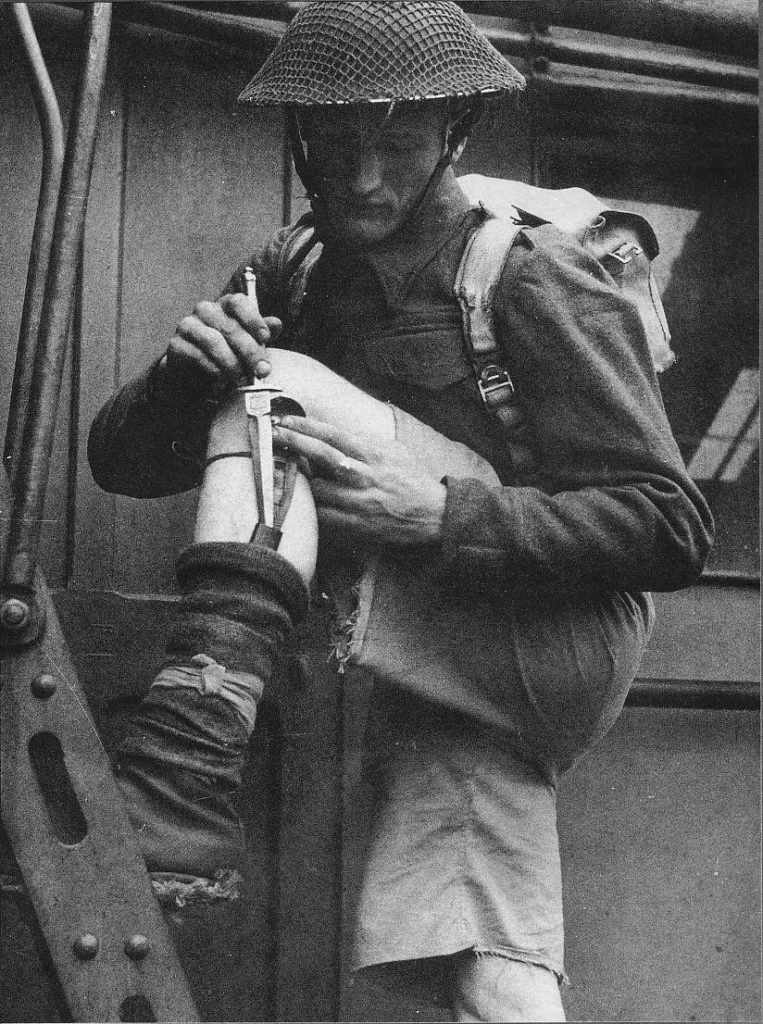
The Fairbairn-Sykes commando knife has a rich history that drew from years of law enforcement experience in the Shanghai Municipal Police (SMP) decades before the onset of World War II. The dream team behind one of the most recognizable World War II knives gathered around a table at Wilkinson Sword Co. Ltd. Experimental Workshop in the United Kingdom on Nov. 4, 1940. John “Jack” Wilkson-Latham handled the manufacturing; Charlie Rose laid out the blueprints as the leading developmental engineer. They handled the nitty-gritty, behind-the-scenes tasks, while the faces of the knife — Lieutenant Colonel William Ewart “Dan” Fairbairn and Major Eric Anthony “Bill” Sykes — made it famous.
Fairbairn and Sykes both served in the SMP at the turn of the 20th century in a volatile time when the city was considered “the most violent crime beat in the world.” The duo learned advanced riot control and self-defense tactics that enabled them to disarm street gangs, often without fatalities. The lessons they learned as police officers on the world’s first SWAT team proved to be critically important for the American (OSS) and British (SOE) commandos they trained. Sometimes the commandos carried nothing more than their rifle and some extra magazines of ammunition, so the additional capability of the Fairbairn-Sykes knife proved a necessity.
Made from solid brass, the 7-inch double-edged stiletto blade with a nickel-plated handguard grip ensured the commandos could use it when they needed it most. It was easily concealed on the body and was used against sentries, animals, or during intense hand-to-hand combat. Because of its capability, effectiveness, and legendary reputation, it remains an inspiration for fighting knives to this day.
V-42
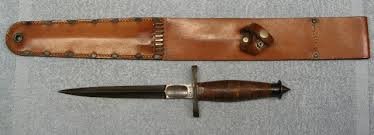
While commandos from the OSS and SOE carried Fairbairn-Sykes fighting knives, members from the First Special Service Force (commonly known as The Devil’s Brigade or “The Black Devils”) carried its inspiration, the V-42 Stiletto. The Devil’s Brigade were an elite force of joint-trained American and Canadian commandos. Their original mission set called for hitting targets in Norway, specifically heavy water plants. Although they trained in the mountains of Montana and mastered operating in winter warfare climates, they saw combat in 1943 in French-held Algeria and later in Italy and France (1944).
Lieutenant Robert T. Frederick was on General Dwight D. Eisenhower’s personal staff and had the responsibility as the commanding officer of the unit. Dermot “Pat” O’Neill, a former SMP and OSS officer, transferred to the training cell of the Devil’s Brigade and brought knowledge to the States that he had learned while serving under Fairbairn and Sykes. Frederick developed the V-42 based on O’Neill’s recommendation. Frederick carried a V-42 during the Italian campaign, and most soldiers carried its sheath on their thighs. The V-42 featured a 7.3125-inch blued stiletto blade, a handle made of “finely serrated leather washers,” and a jagged point on the pummel to use as a “skull crusher.” The V-42 remained a useful fighting knife amongst Army Special Forces and White Star teams in Vietnam but started to phase out as battlefield necessities required specific modifications.
The Bayonet
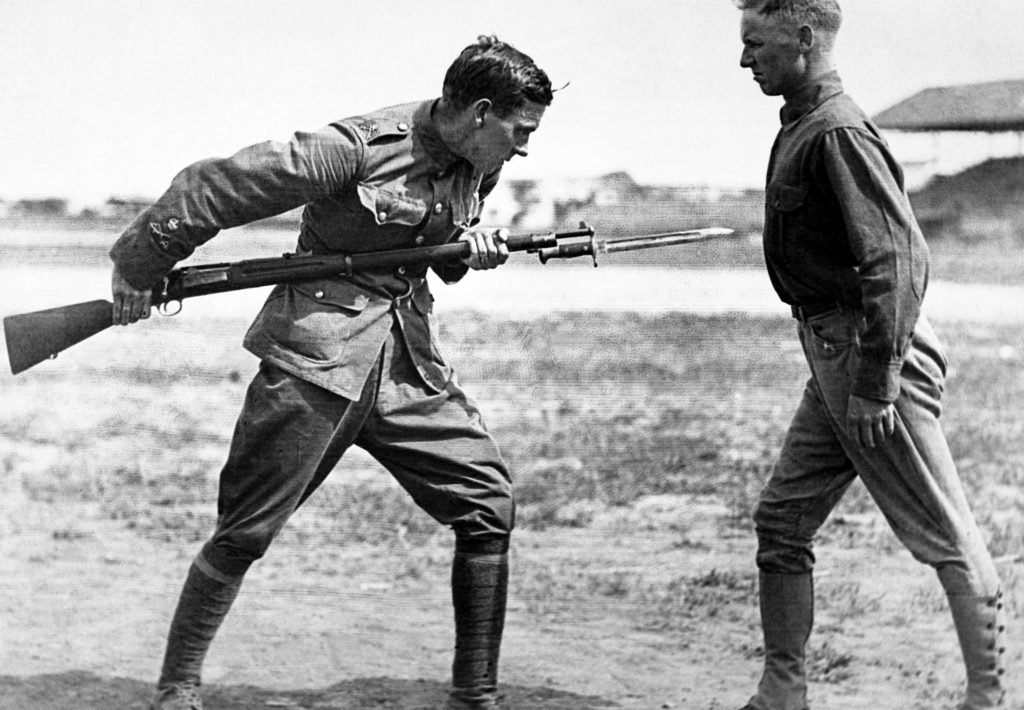
The fear-inducing and nerve-rattling Japanese battle cry “Banzai!” was usually followed by a suicidal human wave of charging foot soldiers pointing and thrusting their rifles into surprised enemy combatants. When the U.S. military issued fixed bayonets, they were to be used during worst-case scenarios when ammo was short and hand-to-hand fighting was expected. During the bloody battle at Guadalcanal, Army soldiers and Marines defended the ridge with such merit that it was later nicknamed Bloody Ridge and Coffin’s Corner.
On Oct. 26, 1942, machine gunner and platoon leader Mitchell Paige, alongside two other Marines, led a heroic bayonet charge against 2,500 determined Japanese fighters. The night before his pre-sunrise attack, Paige heard a Japanese patrol in the distance. He alerted his machine gun teams, and a hellacious battle ensued. With his entire unit wiped out and his machine gun rendered useless, Paige regrouped with a small team of Marines. Their counterattack had devastating results.
They fired from the hip and down their sights. Paige dodged bullets and explosions for 10 hours and even neutralized a Japanese soldier who had drawn a Samurai sword. Miraculously, he survived while all the others were killed or wounded. For his actions, he was awarded the Medal of Honor.

Then there was Lewis Millet, a U.S. Army soldier who had originally joined the Army National Guard as a clerk because, he reasoned, “in high school I took typing — all the good looking women were in the typing class.” He hated it in the Army and deserted to join the Canadians and go overseas to Europe during World War II. He ultimately transferred back to the U.S. Army and saw action against the Nazis in North Africa, where he received a Silver Star. Millet also received the Bronze Star in Italy, but his most notable battlefield commendation came during the Korean War when he led the last major bayonet charge in U.S. military history.
When Millet heard rumors from the Chinese that Americans were afraid of bayonets, he countered, “That’s a blankety-blank lie!” As a true leader, when he ordered his men to fix bayonets on Feb. 7, 1951, near the vicinity of Soam-Ni, they were right behind him. Millet charged forward, a common theme as a forward observer, bayoneted two Chinese soldiers, and overtook the objective. As the dust settled, 50 enemy lay dead — 20 of them killed by bayonets. Hill 180 was later referred to as “Bayonet Hill,” and for his actions, Millet was awarded the Medal of Honor.
The most recent upgrade of World War II and Korean War-era bayonets came from Buck Knives, who developed the M9 Bayonet during the 1980s.
KA-BAR

During the Vietnam War, Lance Corporal James H. Stogner, an 18-year-old Marine who carried extra ammo for his machine gun team, was in a desperate fight against the North Vietnamese Army. The only visibility in the total darkness were muzzle flashes, illumination flares, and tracers. NVA soldiers pushed across a field and killed Marines as they helplessly lay wounded in their path. The NVA then tried to overrun their position and captured Corporal Eli Fobbs, one of Stogner’s teammates. Armed with his KA-BAR knife, Stogner low crawled and killed two NVA soldiers without making a sound, then bum-rushed the final two who were torturing Fobbs. A violent hand-to-hand exchange ensued, and he killed the remaining NVA. Fifty-two years after his heroic actions, Stogner was awarded the Navy Cross.
The KA-BAR’s foundation is said to be based around a story that Wallace Brown, the then-owner of Union Cutlery Company, received in the mail in the early 1920s.
“Years ago an Alaskan hunter had shot a bear who then attacked him and knocked his rifle from his hands. In order for the hunter to protect his life, he took a knife made by Union Cutlery company and successfully killed the bear, which was the Kodiak bear species,” according to the KA-BAR website.
“The hunter in appreciation of the knife having saved his life sent the bear skin to President Wallace Brown. The thought then occurred to the management of the company that if the Kodiak bear is the strongest of the bear species, and the word bear is pronounced ‘bar’, and further, if the cutlery produced by the Union Cutlery Company was the best and strongest of its kind, then it should be very significant that ‘Ka-bar’ might truly represent the qualities of the company’s products. Thus the Ka-Bar trademark was adopted.”

In collaboration with U.S. Marines Captain Howard America and Colonel John Davis, Danford Brown (nephew of Wallace) submitted a fixed-blade fighting/utility knife for testing. The Marines have since carried the KA-BAR throughout World War II, the Korean War, the Vietnam War, and the Global War on Terrorism. The KA-BAR has been synonymous with the Marine Corps and has proven itself in combat countless times.
Gerber Legendary Knives
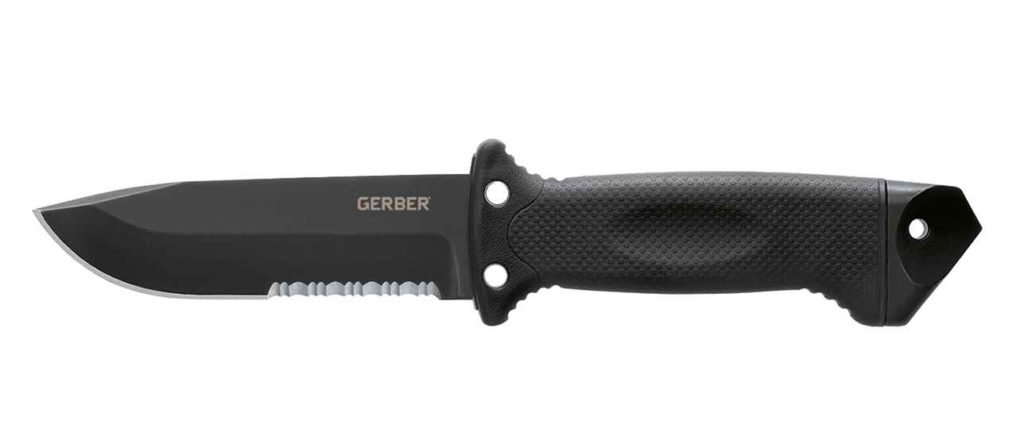
Gerber has had a strong relationship with the U.S. military in recent years and is considered “the largest supplier of knives and multitools to the United States armed forces.” Gerber’s Multi-plier 600 is the “#1 selling multi-tool platform” and features 14 unique tools. A blade can’t fix all the problems of our nation’s premier fighting forces, so having a tool modeled after the Swiss Army Knife is necessary. It includes needle nose pliers, pinch-cut wire cutters, a wire crimper, a plain-edge and serrated-edge knife, a cross-point screwdriver, three sizes of flat-head screwdrivers, a lanyard ring, a can and bottle opener, a file, and a ruler. The multitool can be convenient for menial tasks, but it has proven to be of aid to the mechanic down to the grunt.
One instance of Gerber providing life-saving assistance on the battlefield occurred in Iraq. Medal of Honor recipient Staff Sergeant David Bellavia described in explicit detail his experience fighting alone in hand-to-hand combat inside a house with an Iraqi insurgent. He credits his Gerber Rex Applegate folding knife as the tool that helped him survive. When his ammo ran out, he relied upon the knife on his belt.
Aircrew on helicopters and pilots in aircraft also carry knives as a means for survival. The Gerber LMF II ASEK (Aircrew Survival & Egress Knife) serves as the replacement for the Ontario Knife, more commonly known as the 499 Air Force Survival Knife. The Gerber outperformed every competitor during its list of 30 criteria testing. The stainless steel blade doesn’t require any substantial maintenance and comes with a built-in blade sharpener inside its sheath. The most important feature is its pommel, which acts as a spear and can pierce plexiglass or helicopter windows with ease.
Winkler II
Daniel Winkler, a bladesmith with nearly 50 years of knife making experience, was approached in 2006 by special operators from the U.S. Army and Navy’s Special Missions Units. Their increasing demand for reliable tools required particular specifications that other knives lacked. His knives and tomahawks have since been the stuff of combat lore, being used by our nation’s most elite warriors while operating in the shadows — and even spurring controversy from time to time.
According to Winkler, the “II” doesn’t represent a numeral but means “also.” The WKII Spike is used for prying doors, breaking windows, and piercing breakable structures to create improvised firing lanes in buildings or structures. Having a small and agile knife meant better concealability in hostile and submissive environments.

Matt Fratus is a history staff writer for Coffee or Die. He prides himself on uncovering the most fascinating tales of history by sharing them through any means of engaging storytelling. He writes for his micro-blog @LateNightHistory on Instagram, where he shares the story behind the image. He is also the host of the Late Night History podcast. When not writing about history, Matt enjoys volunteering for One More Wave and rooting for Boston sports teams.
BRCC and Bad Moon Print Press team up for an exclusive, limited-edition T-shirt design!
BRCC partners with Team Room Design for an exclusive T-shirt release!
Thirty Seconds Out has partnered with BRCC for an exclusive shirt design invoking the God of Winter.
Lucas O'Hara of Grizzly Forge has teamed up with BRCC for a badass, exclusive Shirt Club T-shirt design featuring his most popular knife and tiomahawk.
Coffee or Die sits down with one of the graphic designers behind Black Rifle Coffee's signature look and vibe.
Biden will award the Medal of Honor to a Vietnam War Army helicopter pilot who risked his life to save a reconnaissance team from almost certain death.
Ever wonder how much Jack Mandaville would f*ck sh*t up if he went back in time? The American Revolution didn't even see him coming.
A nearly 200-year-old West Point time capsule that at first appeared to yield little more than dust contains hidden treasure, the US Military Academy said.












